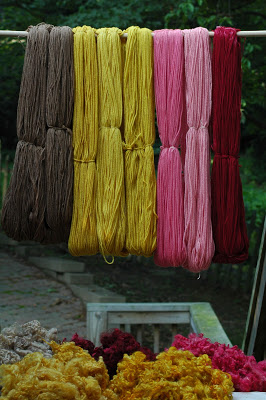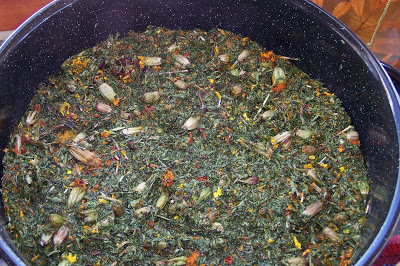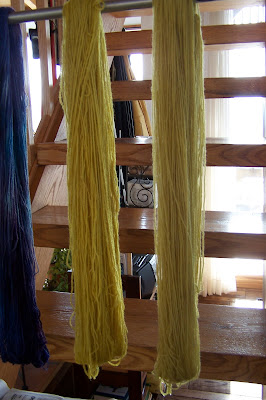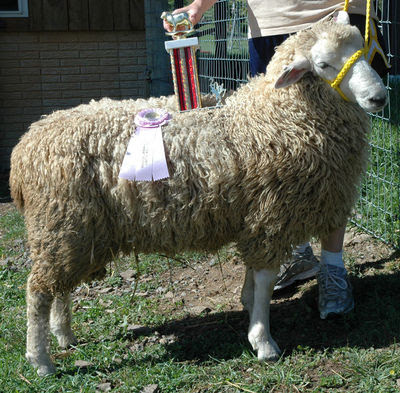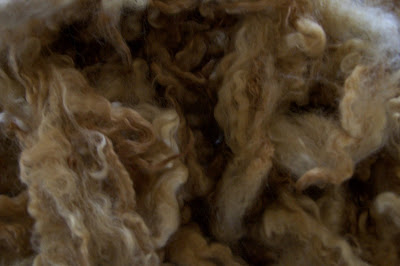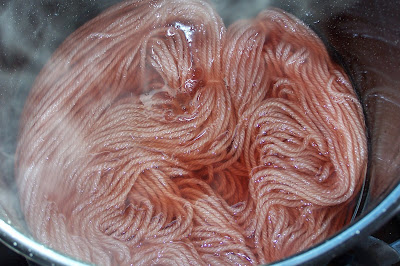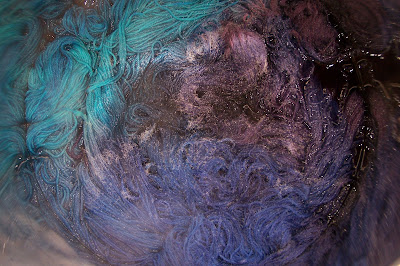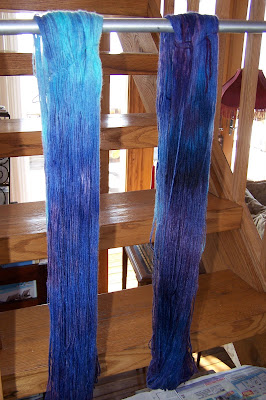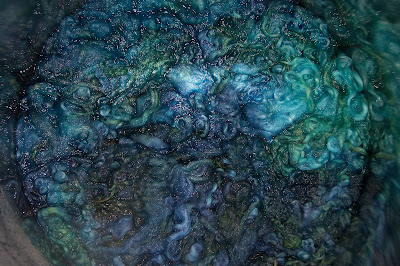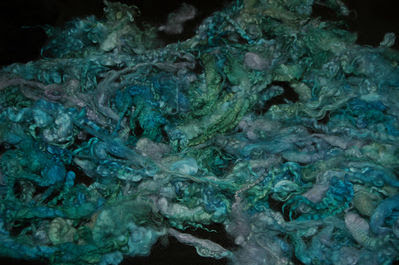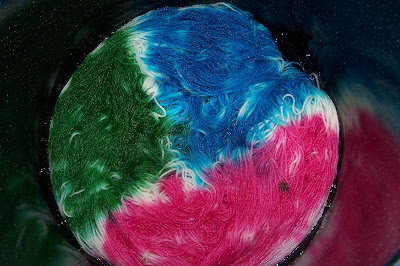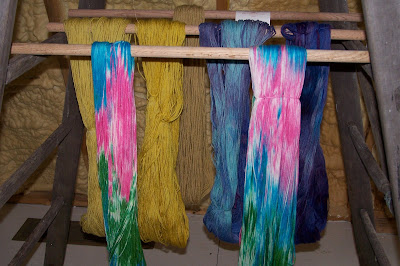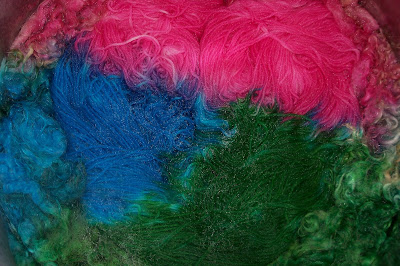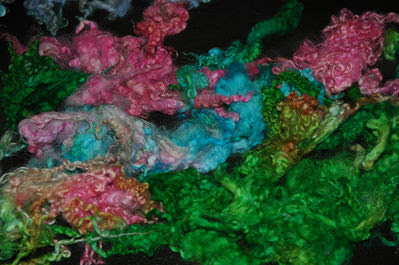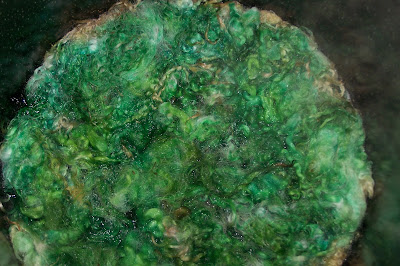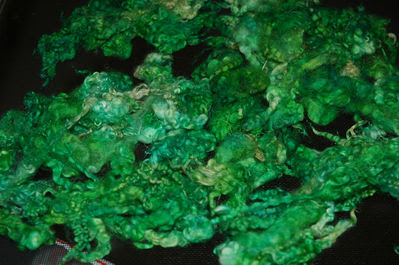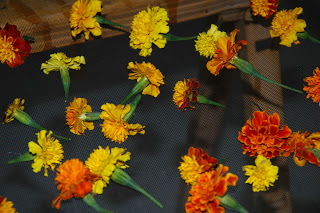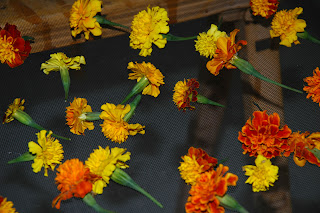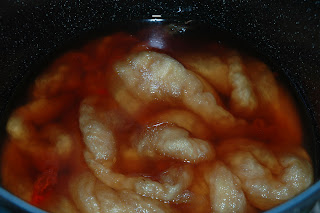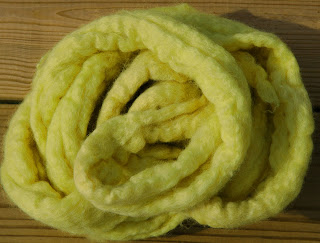Our natural-dyeing season is officially in full swing. It is easier to do it in the summer when windows can be opened because some of the dyestuff (marigold for instance) smells very strong when boiled. We also make good use of the sun’s energy whenever possible by soaking the dyestuff in either a pot or jar in a warm spot for a couple days. This year we have also been using gallon jars to do some solar-dyeing. We have a batch of Daisy going at the moment.
Everything shown was pre-mordanted with alum except for that dyed with walnut hulls. We will probably use mordant the next time especially when we do locks as they came out… although pretty… very light.
There are lots of books out now about natural-dyeing but we tend to turn time and again to three old standbys for good, basic, detailed information – “The Dyer’s Garden” by Rita Buchanan, “Craft of the Dyer” by Karen Leigh Casselman and “Indigo Madder and Marigold by Trudy Van Stralen.
| walnut hulls, dried marigold flowers, cochineal (from l. to r.) |
 |
| walnut and cochineal (back) marigold flowers (front) |
